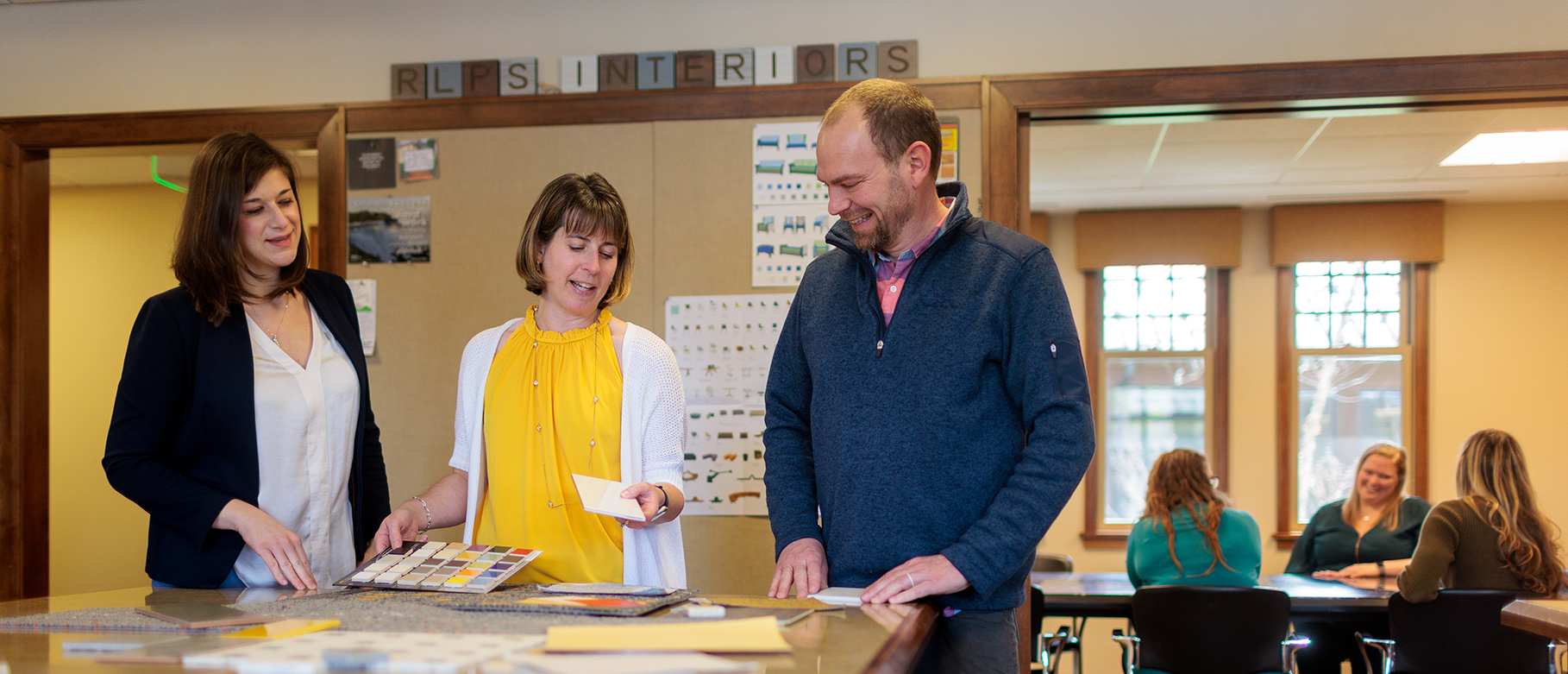Posts
The New Kid on Campus: Designing for Non-Traditional Students
October 9, 2023
When asked to picture a college student, the typical representation is a young adult – anywhere between 18-22 years old. They are probably wearing jeans and possibly a shirt emblazoned with the name of the institution that they attend. While that image fits the simple majority of students, it doesn’t represent all of them.
Despite the overall numbers of students enrolled in higher education decreasing, the number of non-traditional students attending classes has been steadily increasing. In fact, research from Higher Learning Advocates shows that in Pennsylvania 37% of college students today are over 25.
Interior Renovations: Budget-Friendly & Brand-Building with Big Benefits
November 9, 2022
Higher education institutions understand the importance of evolving and changing with the times; making campus updates is among the top priorities from year to year. Rather than initiate a large construction project, institutions are staying current with small-scale interior renovations to underutilized areas of campus that need reimagining.
Combining interior renovations with upgraded furniture can provide a large impact through projects that can be completed in a shorter timeframe and don’t exhaust the annual budget. These quick-hitting projects aim to improve the value an institution provides to its students and reinforce the branded experience intended for campus.
Moving Day
September 12, 2022Dropping Your Child Off at College: A Parent’s Perspective

The end of summer brings many things: shorter days, cooler weather and the first day of classes. For first-time college students, moving day and the prospect of living away from home for the very first time can be an exciting time. From the rush of receiving an acceptance letter to the campus that was first choice to the hours spent shopping to get the perfect accessories to decorate a new room, it’s a non-stop adventure.
As a firm that provides higher education planning and design, we focus on the campus experience and how it affects students, faculty, staff and parents. Lessons learned from our own teams’ experience offer insights that we can apply to future design. Two of our RLPS team members who recently dropped off their children at college for their first year were nice enough to share their experiences. Along with recounting how moving went, they also let us know how their kids… and they are adjusting.
The parents on our staff began with completely opposite levels of experience with preparing and dropping off children at college. One parent was moving their youngest of three children to an out-of-state university, a few hours’ drive away. The other was moving their oldest child to a college closer to home. Despite the marked difference in the distance travelled and parental familiarity with moving kids to college, they had similar experiences and feelings.
Campus Redevelopment, Revitalization, and Resiliency
July 11, 2022How Community Partnerships Can Benefit Your Institution and the Surrounding Community

This topic was the focus of a panel discussion at the AICUP Campus Leaders Forum held in Harrisburg, PA on June 15th.
“We need to see ourselves no longer as an ivory tower surrounded by walls or fences but in the midst of the economies of which we exist and upon which we depend.” – Dominic DelliCarpini, Ph.D., York College of PA
While higher ed and industry have very different missions and cultures, there is a symbiotic relationship between the two. Finding a common ground for collaboration, research and work partnerships benefits everyone. As campus recruiting becomes more competitive, community partnerships serve as a positive differentiator and a valuable resource for long-term vitality.
Supporting Student Wellness and Campus Health through Design
May 11, 2022 For many young adults, college is the first time they’ve been on their own and away from their support network of family and close friends. COVID-19 made this time of sudden change even more stressful for many by limiting social interactions and activities while still expecting students to keep up with their courses. This dramatic and sudden change has highlighted the importance of student wellness design.
For many young adults, college is the first time they’ve been on their own and away from their support network of family and close friends. COVID-19 made this time of sudden change even more stressful for many by limiting social interactions and activities while still expecting students to keep up with their courses. This dramatic and sudden change has highlighted the importance of student wellness design.
College campuses nationwide have reported higher levels of depression, anxiety, and stress. According to a survey by the American Council on Education, 72% of college and university presidents identified student mental health as a pressing issue for the 2021-22 school year. Mental health challenges can also result in less physical activity, eating too much or too little, making unhealthy food choices and sleep disruptions. As a consequence of the psychological stress, both physical well-being and academics can suffer.